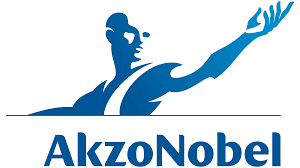Sherwin-Williams, a name synonymous with quality paints and coatings, boasts a remarkable history stretching back to 1866. Founded in Cleveland, Ohio, by Henry Sherwin and Edward Williams, the company’s journey began as a local paint distributorship. However, through a combination of visionary leadership, a commitment to innovation, and an unwavering focus on customer needs, Sherwin-Williams has transformed into a global leader in the paint and coating industry.
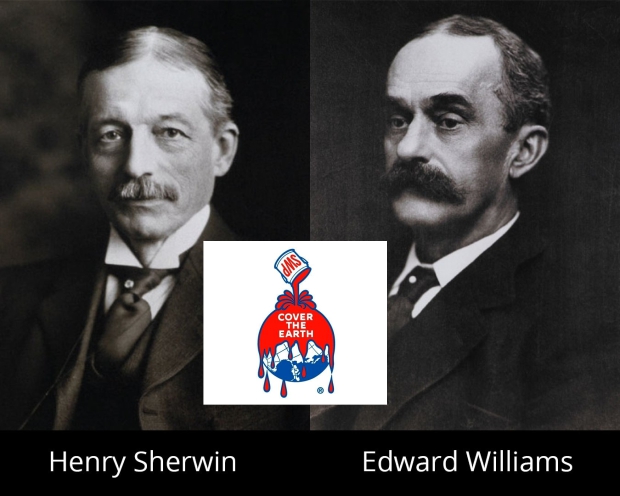
In 1875, Sherwin-Williams forever altered the landscape of the paint industry with the introduction of the first ready-mixed paint. Previously, consumers were burdened with the tedious task of purchasing and mixing individual paint ingredients. Sherwin-Williams’ innovation revolutionized the painting process, making it more convenient and accessible for everyone. This groundbreaking achievement cemented the company’s reputation as a pioneer in the field.
Sherwin-Williams’ product portfolio extends far beyond traditional wall paints. The company caters to a wide range of applications, offering specialized coatings for industrial purposes, marine environments, and even automotive refinishing. Their commitment to research and development has resulted in a vast array of high-performance coatings, ensuring exceptional protection and durability for various surfaces.
Sherwin-Williams understands the transformative power of color. They have cultivated a reputation for exceptional color expertise, offering a vast array of hues and finishes to meet the diverse needs of their customers. From vibrant accent colors to timeless neutrals, their extensive color palette empowers homeowners, designers, and professionals to bring their creative visions to life. Moreover, Sherwin-Williams’ innovative color tools and resources, such as color visualization technology and expert advice from their knowledgeable staff, further solidify their position as a leader in color guidance.
Sherwin-Williams’ success story extends far beyond its American roots. Through strategic acquisitions and international expansion, the company has established a strong presence across the globe. This global reach allows them to cater to the diverse needs of an international clientele while fostering innovation and collaboration on a worldwide scale.
Sherwin-Williams recognizes the importance of environmental responsibility. They are continuously developing new technologies and formulations that prioritize sustainability. Their commitment to eco-friendly practices, such as reducing VOC emissions and utilizing recycled materials, ensures that their products are not only high-performing but also environmentally conscious.
Sherwin-Williams’ unwavering dedication to quality, innovation, and customer satisfaction has cemented its position as a leader in the paint and coating industry. From its revolutionary ready-mixed paints to its extensive product portfolio and commitment to color expertise, Sherwin-Williams continues to shape the landscape of the industry, leaving a lasting legacy that promises to endure for generations to come.
Target Audience of Sherwin-Williams
Sherwin-Williams strategically targets a broad audience, encompassing both consumer and professional segments. DIY enthusiasts find all the necessary tools and paints to tackle their home improvement projects, while professionals like contractors, builders, and designers rely on Sherwin-Williams’ high-performance products and industry expertise to bring their projects to life. The company recognizes the growing Hispanic demographic and tailors its marketing efforts to effectively reach this specific audience.
Beyond homeowners and professionals, Sherwin-Williams caters to a vast industrial clientele. Colleges, universities, and educational institutions utilize Sherwin-Williams’ paints for their facilities. The heavy machinery, electrical, and electronic sectors depend on the company’s specialized coatings for protection and durability. This commitment to diverse applications reflects Sherwin-Williams’ mission to be a global leader, providing superior products for a wide range of needs.
Sherwin-Williams’ success is built on a foundation of understanding its customers. Their corporate purpose to “inspire and improve the world by coloring and protecting what matters” reflects this dedication. By offering exceptional customer service, fostering a highly qualified workforce, and prioritizing sustainability, Sherwin-Williams creates a strong foundation for continued growth and innovation, ensuring they can serve their devoted clientele for generations to come.
Marketing Strategies of Sherwin-Williams
Sherwin-Williams is a prominent company in the paint and coatings industry, known for its wide range of products and strong brand presence. Here are some key components of Sherwin-Williams’ marketing strategies:
1. Brand Recognition and Reputation
Sherwin-Williams has strategically leveraged brand recognition and reputation as a cornerstone of their marketing strategy. Their extensive reach, both physical and digital, reinforces their brand presence. Over 5,000 Sherwin-Williams stores across North and South America and the Caribbean provide a familiar and accessible touchpoint for consumers. Beyond their own stores, partnerships with major retailers, hardware stores, and distributors further expand their visibility, ensuring Sherwin-Williams products are readily available across diverse sales channels. This ubiquity keeps the brand at the forefront of consumers’ minds, solidifying their position as a leader in the paint industry.
Sherwin-Williams further amplifies their brand recognition through strategic sponsorships and partnerships. Their involvement with major sporting events like NASCAR creates positive brand associations and increases brand awareness among a broad audience. Additionally, their commitment to sustainability, demonstrated by their membership in the U.S. Green Building Council, fosters a positive brand image and resonates with environmentally conscious consumers. By aligning themselves with popular events and values-driven initiatives, Sherwin-Williams positions their brand as trustworthy, reliable, and in touch with current trends.

The combined effect of widespread availability, strategic partnerships, and a focus on social responsibility cultivates a strong brand reputation for Sherwin-Williams. Customers perceive the brand as not only readily accessible and high-quality, but also socially conscious. This positive reputation fosters brand loyalty and trust, encouraging repeat business and positive word-of-mouth recommendations. In conclusion, Sherwin-Williams’ strategic use of brand recognition and reputation has played a vital role in their continued success and market dominance.
2. Product Innovation
Sherwin-Williams leverages product innovation as a key marketing strategy to solidify their brand image and stay ahead of the curve. Their rich history of pioneering advancements, like the first ready-mixed paint and their own paint cans, demonstrates a long-standing commitment to pushing boundaries. This dedication to innovation continues today, with over 400 patents to their name. By consistently developing new and improved products, Sherwin-Williams positions themselves as an industry leader at the forefront of technological advancements.
One area where Sherwin-Williams’ innovation shines is in the development of diverse coatings. Their extensive portfolio caters to various industries, including automotive, aerospace, and marine, with epoxies, polyurethanes, and fluoropolymers being just a few examples. This focus on specialized solutions showcases their ability to adapt to specific customer needs and offer superior performance across various applications. Furthermore, their commitment to sustainability is evident in their development of low-VOC and water-based paints, catering to environmentally conscious consumers. This innovation not only expands their product range but also resonates with a growing market segment seeking eco-friendly options.
Sherwin-Williams’ innovation extends beyond just the product itself. They continuously develop new tools and technologies to enhance the customer experience. For instance, their ColorSnap® color matching system empowers customers to find the perfect color for their project with precision. Additionally, their investment in technologies like 3D printing demonstrates a forward-thinking approach, ensuring they remain adaptable in an ever-evolving technological landscape. By consistently introducing innovative products and solutions, Sherwin-Williams positions themselves as a reliable partner for their customers, fostering brand loyalty and trust.
3. Diverse Product Range
Sherwin-Williams strategically leverages a diverse product range as a cornerstone of their marketing strategy. By offering a comprehensive selection of paints, coatings, and related products, they cater to a wide range of customer needs and applications. From interior paints like Emerald Duration for high-traffic areas to Loxon XP exterior stain for protecting decks, Sherwin-Williams ensures customers can find the perfect solution for their project, whether professional, industrial, retail, or commercial. This extensive product portfolio positions them as a one-stop shop, eliminating the need for customers to search elsewhere for specialized solutions.
Beyond the breadth of their product range, Sherwin-Williams further distinguishes itself through product variety within each category. Their interior paint selection, for instance, includes options like Cashmere Harmony for a luxurious finish and ProMar 200 Zero VOC for an eco-friendly choice. This variety empowers customers to personalize their projects based on desired aesthetics, functionality, and environmental considerations. This commitment to offering diverse choices within each product category caters to individual preferences and project requirements, solidifying their position as a brand that understands the multifaceted needs of their customers.
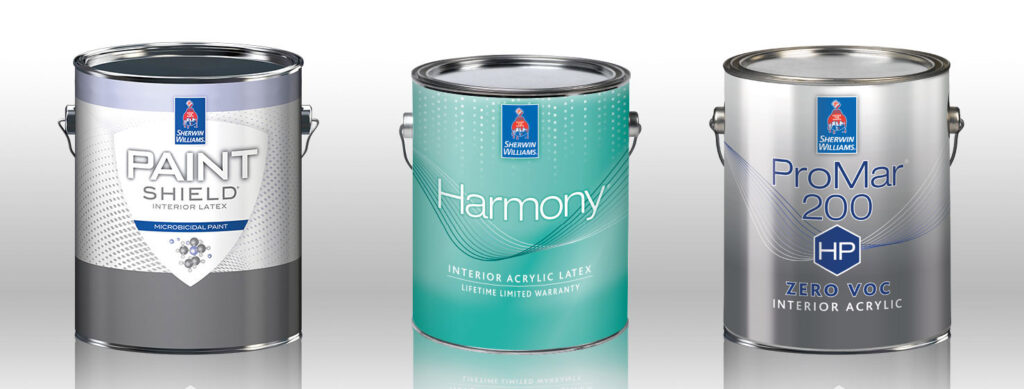
Sherwin-Williams’ diverse product range extends beyond just paints. Their offerings encompass stains, equipment, floor coverings, and more. This comprehensive approach ensures they can equip customers for their entire project, not just the painting aspect. By offering a full suite of solutions, Sherwin-Williams simplifies the shopping experience and positions themselves as a trusted partner throughout the entire project lifecycle. This strategic approach fosters customer loyalty and encourages repeat business, solidifying their position as a leader in the paint and coatings industry.
4. Distribution Network
Sherwin-Williams leverages its robust distribution network as a strategic marketing tool to ensure accessibility and exceptional customer service. Their global presence, encompassing over 120 countries, positions them as a truly international brand readily available to a vast customer base. This extensive reach is further amplified by their network of over 5,000 company-operated stores strategically located across North and South America and the Caribbean. These stores provide convenient touchpoints for customers, allowing them to browse products, seek expert advice from knowledgeable staff, and make purchases directly.
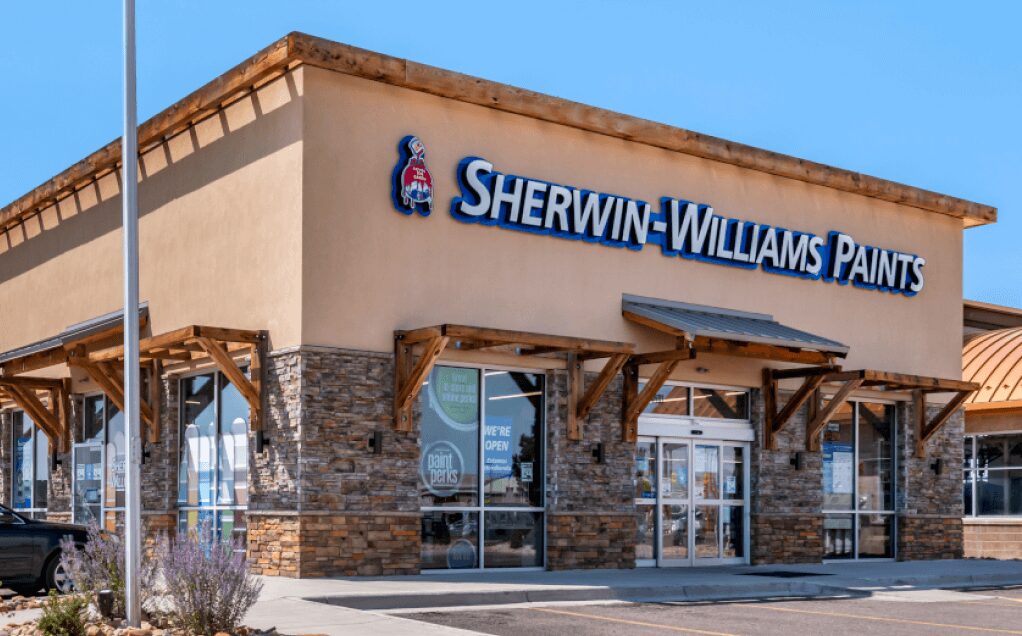
Beyond their own stores, Sherwin-Williams strategically partners with a network of independent dealers. This approach expands their reach even further, ensuring their products are available in diverse markets like construction, industrial, packaging, and transportation. This partnership strategy not only increases product accessibility but also leverages the expertise of independent dealers who cater to specific industry needs. By combining their own stores with a network of dealers, Sherwin-Williams creates a comprehensive distribution network that caters to a wide range of customers across various locations and industries.
Furthermore, Sherwin-Williams’ network of over 550 distribution centers strategically positioned around the world ensures efficient and timely product delivery. This focus on logistics minimizes wait times and ensures customers receive their purchases promptly. The combination of convenient store locations, a network of knowledgeable dealers, and efficient distribution centers fosters a positive customer experience, solidifying Sherwin-Williams’ reputation as a reliable and accessible brand. This comprehensive distribution strategy plays a vital role in their marketing efforts, promoting brand recognition, customer satisfaction, and continued success in the paint and coatings industry.
5. Promotional Campaigns and Advertising
Sherwin-Williams strategically utilizes promotional campaigns and advertising to create brand awareness, generate excitement, and ultimately drive sales. Their approach leverages various media channels, tailoring campaigns to resonate with specific target audiences. For instance, the Colour Collecting campaign, focused on social media, encouraged customer participation and fostered a sense of community. By incorporating user-generated photos into their marketing materials, Sherwin-Williams built a deeper connection with their audience and showcased the versatility of their color palette.
Beyond social media engagement, Sherwin-Williams also executes strategic digital marketing campaigns. The Krylon yard sale campaign exemplifies this approach. By sponsoring the World’s Longest Yard Sale event and leveraging social media and digital channels, Sherwin-Williams effectively targeted DIY enthusiasts and increased brand visibility during a relevant event. The creation of informative how-to videos and short pre-roll advertisements further strengthened the campaign, providing valuable content to potential customers while promoting Krylon paint.
Sherwin-Williams understands the power of traditional marketing channels as well. The Purdy campaign, featuring television ads, radio announcements, and print ads, demonstrates their commitment to a well-rounded marketing strategy. This campaign effectively reached a broad audience and likely resonated with professional painters and homeowners alike. The creation of a dedicated website and social media pages for the Purdy campaign provided a central hub for customers seeking additional product information and brand engagement. By combining traditional and digital marketing tactics, Sherwin-Williams ensures their promotional efforts reach a wide audience and effectively communicate their brand message.
6. Professional Services and Support
Sherwin-Williams strategically positions itself as a trusted partner for professionals within the paint and coatings industry. Their commitment to professional services and support goes beyond simply offering high-quality products. Programs like PRO+ provide businesses with tangible benefits such as preferred pricing, free delivery, and discounted supplies, streamlining the procurement process and fostering long-term customer relationships. Additionally, Sherwin-Williams’ extensive technical support ensures professionals have access to expert advice regarding coatings for diverse applications, from aerospace to industrial settings.
This focus on professional services extends to their local presence. With over 4,500 neighborhood stores, Sherwin-Williams offers convenient access to expert advice and personalized service. Their team of 60,000 local sales representatives leverages product expertise to assist professionals in selecting the optimal solution for their specific projects. Furthermore, contractor support programs including product and application training empower professionals with the knowledge and skills necessary for successful project completion. By prioritizing professional services and support, Sherwin-Williams builds trust and strengthens relationships with professional clients, solidifying their position as a leading partner in the industry.
Overall, Sherwin-Williams’ marketing strategies focus on delivering quality products, engaging customers, expanding their reach, and maintaining a strong brand presence in the competitive paint and coatings industry.
Marketing Mix of Sherwin-Williams
Sherwin-Williams, a household name synonymous with quality paints and coatings, has cultivated its success through a strategic and well-rounded marketing mix. Let’s delve into each of the 4Ps (Product, Price, Place, and Promotion) to understand how Sherwin-Williams leverages them to establish brand dominance.
1. Product
Diversity: Sherwin-Williams offers a vast and diverse product portfolio catering to a wide range of customers. From DIY-friendly paints and primers to high-performance coatings for industrial applications, they cater to professionals, homeowners, and various industries. This extensive selection ensures customers can find the perfect solution for any project.
Innovation: Sherwin-Williams has a long history of pioneering innovation in the paint industry. Their commitment to research and development results in a continuous stream of new and improved products. This focus on innovation keeps them at the forefront of technological advancements and allows them to address evolving customer needs. Examples include low-VOC and water-based paints catering to the environmentally conscious customer, and specialty coatings for diverse applications.
Quality: Sherwin-Williams is renowned for its unwavering commitment to product quality. Their paints are known for durability, ease of application, and a wide range of colors. This focus on quality translates to a positive customer experience, fostering brand loyalty and trust.
2. Price
Value-Based Pricing: Sherwin-Williams employs a value-based pricing strategy. While their products may occupy a premium position compared to budget brands, the superior quality, performance, and expertise offered justify the pricing. Customers perceive Sherwin-Williams’ products as an investment that delivers lasting results, solidifying their willingness to pay a slight premium.
Also, Sherwin-Williams strategically utilizes promotional pricing to generate excitement and encourage sales. Limited-time discounts, bundled offerings, and loyalty programs incentivize customers and create a sense of urgency.
3. Place
Widespread Distribution: Sherwin-Williams boasts a robust distribution network, ensuring convenient access to their products for customers. This network encompasses over 4,500 company-operated stores strategically located around the world. Beyond their own stores, partnerships with independent dealers and major retailers further expand their reach, making their products readily available across diverse sales channels.
Global Presence: Sherwin-Williams operates in over 120 countries, showcasing a truly international presence. This global reach allows them to cater to a vast customer base and cater to the specific needs of various regions.
Local Focus: Despite their global presence, Sherwin-Williams maintains a strong local focus. Their neighborhood stores provide a familiar and accessible touchpoint for customers, fostering a sense of community and personalized service.
4. Promotion
Multi-Channel Approach: Sherwin-Williams leverages a multi-channel promotional approach to reach a broad audience. They utilize traditional advertising channels like television, radio, and print media alongside contemporary methods such as social media marketing and digital advertising. This comprehensive approach ensures brand visibility across diverse demographics and communication preferences.
Content Marketing: Sherwin-Williams invests in creating valuable content such as how-to videos, blog posts, and color consultation tools. This content empowers customers with knowledge, establishes Sherwin-Williams as a thought leader, and fosters brand engagement.
Strategic Partnerships: Sherwin-Williams partners with relevant entities like NASCAR to increase brand awareness and create positive brand associations. These strategic partnerships allow them to tap into existing audiences and connect with potential customers who share similar interests.
Customer Focus: A core element of Sherwin-Williams’ promotional strategy is their emphasis on customer focus. Their knowledgeable and helpful staff provides expert advice and personalized service, ensuring a positive customer experience that fosters brand loyalty and word-of-mouth recommendations.
Sherwin-Williams’ success exemplifies the power of a well-crafted marketing mix. By strategically leveraging each of the 4Ps (Product, Price, Place, and Promotion), they have established themselves as a leader in the paint and coatings industry. Their commitment to product innovation, diverse product offerings, value-based pricing, accessible distribution networks, and multi-channel promotional strategies have positioned them as a trusted partner for professionals and homeowners alike.
SWOT Analysis of Sherwin-Williams
Sherwin-Williams has established itself through a rich history of quality, innovation, and global reach. However, navigating the ever-changing market landscape demands a keen understanding of their internal capabilities (strengths and weaknesses) and external influences (opportunities and threats). Let’s delve into a detailed SWOT analysis of Sherwin-Williams:
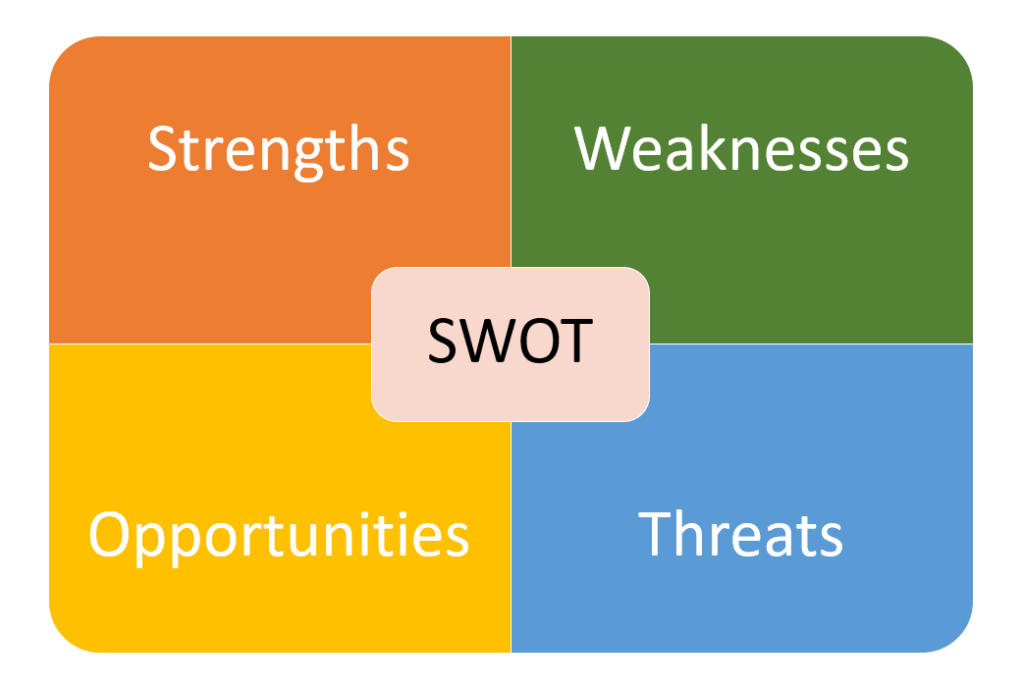
Strengths
Brand Powerhouse: Sherwin-Williams boasts a brand synonymous with trust and quality. Their long-standing reputation, established through consistent innovation and exceptional products, positions them as a leader consumers readily recognize and rely on.
Product Diversity: They cater to a wide range of customers with a diverse product portfolio. From DIY-friendly paints to high-performance industrial coatings, their offerings address various needs and applications, ensuring a one-stop shop for many customers.
Global Domination: Sherwin-Williams’ presence in over 120 countries grants them a significant competitive edge. This global reach allows them to tap into diverse markets, cater to regional preferences, and establish themselves as a truly international brand.
Weaknesses
Raw Material Reliance: Sherwin-Williams’ production hinges on the availability of key raw materials like titanium dioxide and resins. Disruptions in the supply chain or price fluctuations of these materials can significantly impact their ability to produce and fulfill customer demands.
Supply Chain Vulnerability: Their complex global supply chain exposes them to potential disruptions. Geopolitical issues, natural disasters, or trade wars can significantly hinder their operations and product delivery timelines.
Economic Sensitivity: Sherwin-Williams’ sales demonstrate a cyclical pattern, heavily influenced by economic fluctuations. During economic downturns, consumer spending on home improvement projects and industrial production typically decline, impacting their sales negatively.
Opportunities
Emerging Market Expansion: The burgeoning economies of China and India present lucrative opportunities for Sherwin-Williams. By strategically entering these markets, they can capitalize on the rapid growth and tap into a vast customer base.
Digital Transformation: Embracing digital technologies can revolutionize Sherwin-Williams’ operations and customer service. Artificial intelligence can be harnessed for product development and supply chain optimization, while enhanced online platforms can streamline purchasing and provide valuable customer support.
Sustainability Focus: The growing emphasis on sustainability presents an opportunity. By developing eco-friendly products and highlighting their sustainable practices, Sherwin-Williams can attract environmentally conscious consumers and differentiate themselves from competitors.
Threats
Cutthroat Competition: The paint and coatings industry is fiercely competitive. Major players like PPG Industries, AkzoNobel, and BASF constantly vie for market share. Sherwin-Williams needs to stay innovative and adaptable to maintain their competitive edge.
Economic Downturns: As mentioned earlier, economic downturns pose a significant threat. Reduced consumer spending and lower industrial production can lead to declining sales and hinder overall growth.
Sherwin-Williams’ strong brand recognition, diverse product portfolio, and global presence solidify their position as a leader in the paint and coatings industry. However, they cannot afford to be complacent. Addressing their weaknesses in supply chain vulnerability and economic sensitivity is crucial. Furthermore, capitalizing on opportunities in emerging markets, digital transformation, and sustainability will propel them towards continued success. By remaining vigilant against the ever-present threat of intense competition and economic fluctuations, Sherwin-Williams can ensure their long-term dominance in the paint and coatings industry.
Competitor Analysis of Sherwin-Williams
Sherwin-Williams faces competition from a range of companies vying for market share. To maintain their leadership position, understanding their key competitors and their strengths and weaknesses is crucial. Here’s a detailed analysis of Sherwin-Williams’ competitive landscape:
1. PPG Industries
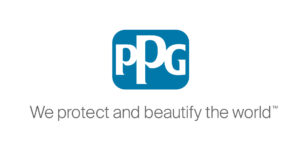
A major competitor with a strong presence in architectural, industrial, and transportation coatings. PPG is known for its innovative products and focus on sustainability. They may pose a threat in the high-performance coatings segment.
2. AkzoNobel
A Dutch multinational company with a diverse product portfolio encompassing decorative paints, performance coatings, and specialty chemicals. Their global reach and focus on innovation in areas like eco-friendly solutions can be a challenge for Sherwin-Williams.
3. BASF
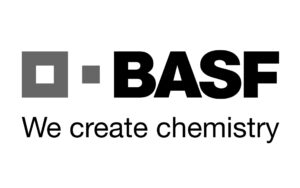
A German chemical giant with a strong industrial coatings segment. Their extensive research and development capabilities and focus on high-tech coatings could threaten Sherwin-Williams’ market share in specific industrial applications.
Competitive Analysis:
Here’s a breakdown of how Sherwin-Williams stacks up against its major competitors across key metrics:
| Factor | Sherwin-Williams | PPG Industries | AkzoNobel | BASF |
|---|---|---|---|---|
| Strengths | Strong brand, diverse product portfolio, global presence | Innovative products, focus on sustainability | Diverse product portfolio, global reach, eco-friendly solutions | Strong industrial coatings segment, R&D capabilities |
| Weaknesses | Reliance on raw materials, supply chain vulnerability, economic sensitivity | May lack brand recognition compared to Sherwin-Williams | Dependence on volatile chemical markets | Industrial focus may limit reach in DIY and architectural segments |
| Opportunities | Emerging market expansion, digital transformation, sustainability focus | Growth in protective and marine coatings, strategic acquisitions | Expansion into high-growth markets, e-commerce opportunities | Partnerships in automotive and aerospace industries |
| Threats | Intense competition, economic downturns | New entrants, regulations on raw materials | Fluctuating energy prices, brand differentiation | Economic dependence on China |
Competitive Advantages of Sherwin-Williams:
Brand Recognition: Sherwin-Williams enjoys a well-established brand image synonymous with quality and trust. This brand loyalty gives them an edge in attracting and retaining customers.
Distribution Network: Their extensive network of company-owned stores and partnerships with independent dealers ensures convenient product availability for a broad customer base.
Product Diversity: Catering to a wide range of applications, from DIY to high-performance industrial coatings, Sherwin-Williams offers a one-stop shop solution for many customers.
Strategies to Counter Competition:
Continued Innovation: Maintaining a focus on research and development to introduce new and improved products that address evolving customer needs and environmental concerns.
Digital Transformation: Leveraging digital technologies to enhance customer experience, streamline operations, and optimize the supply chain.
Targeted Marketing: Implementing strategic marketing campaigns to strengthen brand recognition, highlight product differentiation, and target specific customer segments.
Geographic Expansion: Strategically entering emerging markets with high growth potential to capitalize on new customer bases.
Focus on Sustainability: Developing eco-friendly products and underlining their commitment to sustainable practices to attract environmentally conscious consumers.
The paint and coatings industry is a dynamic landscape with fierce competition. Sherwin-Williams’ success hinges on their ability to address competitor strengths, capitalize on emerging opportunities, and leverage their unique advantages. By fostering a culture of innovation, prioritizing sustainability, and strategically expanding their reach, Sherwin-Williams can ensure their continued dominance in the ever-evolving market.
Also Read: A Deep Dive into the Marketing Strategies of Tupperware
To read more content like this, subscribe to our newsletter

